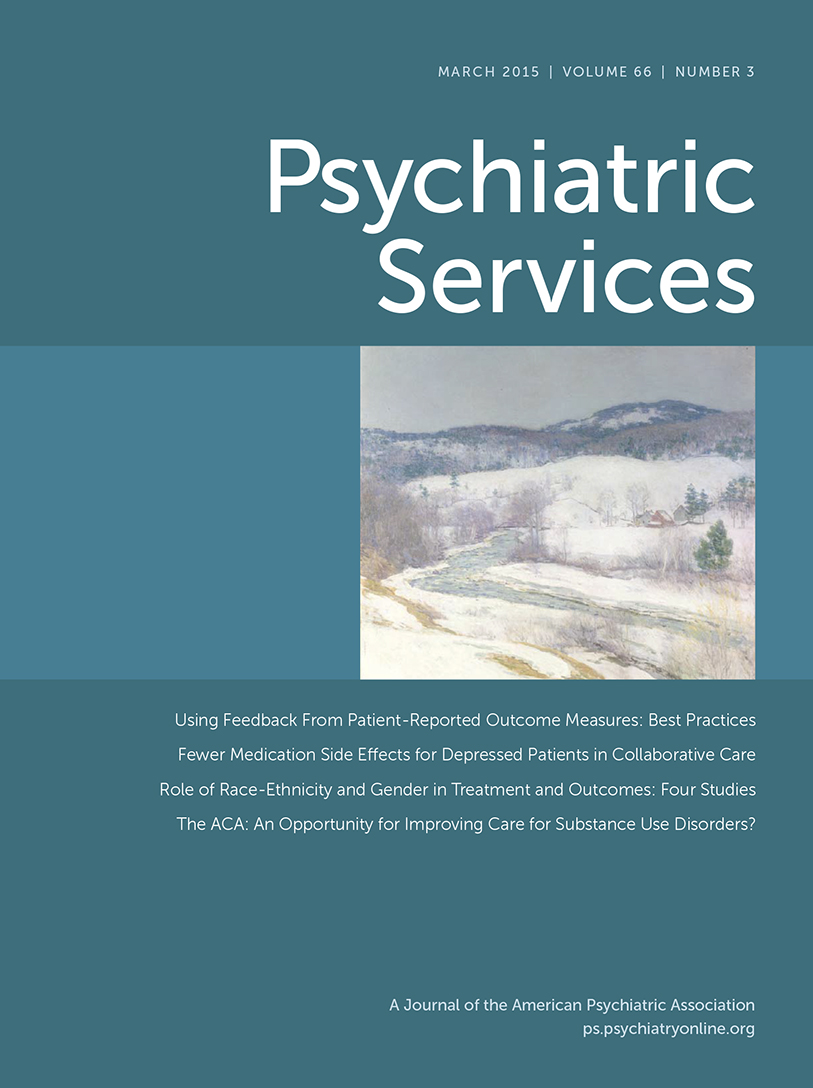This Month’s Highlights
Using Feedback From Patient-Reported Outcome Measures
Formal evaluation of patient outcomes is an important focus in today’s health care environment, and including the patient’s perspective is increasingly important. Researchers and clinicians have developed an array of patient-reported outcome measures (PROMs)—standardized instruments on which patients rate their health or functional status, quality of life, and other treatment outcomes, such as symptoms of depression or anxiety. In clinical practice, PROMs are used in a variety of ways: as treatment-monitoring tools, as decision aids, to facilitate communication between patient and provider, and to assess the effectiveness of care. This month’s lead article is a literature review that examined the diverse ways that mental health services use feedback from PROMs in routine care. Christian U. Krägeloh, Ph.D., and colleagues reviewed 27 studies, grouping them into a typology of five categories along a continuum that reflected “the intensity of use of PROM feedback”—from studies in which PROM scores were not fed back to either the patient or the clinician (category 1) to studies in which the clinic had formal guidelines for incorporating PROM feedback into clinician-patient discussions (category 5). When the authors examined results reported in the 27 studies, they found that use of formalized guidelines for clinician-patient discussion of PROM feedback was the category most highly associated with improved therapeutic outcomes (page Original article: 224).
Effects of Race-Ethnicity and Gender
Results from four studies highlight the role of race-ethnicity and gender in treatment and outcomes. With data from nearly 4,000 children with serious emotional disturbances, Ioana Popescu, M.D., M.P.H., and colleagues examined racial-ethnic differences in receipt of services among children enrolled in systems of care under the Children’s Mental Health Initiative (CMHI). Because the CMHI was launched in 1993 to close gaps in care among disadvantaged children, the authors expected to find only modest racial-ethnic differences. Instead they found persistent and troubling disparities, especially for African-American and Latino children (page Original article: 242). Analyses of data from an in-person survey of nearly two million adults in China found that gender played a role in the extent of functional disability experienced by people with schizophrenia. Tianli Liu, Ph.D., and colleagues found that women with schizophrenia who lived in rural areas were nearly twice as likely as their male counterparts to experience substantial disability. Social inequalities precipitated by China’s rapid economic growth likely account for some of the findings, the authors conclude (page Original article: 249). Hyeouk Chris Hahm, M.S.S.W., Ph.D., and colleagues analyzed electronic medical records data from more than 65,000 primary care patients, with a focus on how race-ethnicity and gender affected care at each step of depression care: screening, receipt of any mental health care, and receipt of adequate care. They found that gender and race-ethnicity interacted to create different patterns of disparities at each step. Better understanding of these patterns could lead to more nuanced quality improvement efforts (page Original article: 258). Finally, Kathleen M. Grubbs, Ph.D., and her research team report on how gender moderated the effects of CALM (Coordinated Anxiety Learning and Management), a collaborative care intervention for anxiety disorders. The authors found that women were significantly more likely than men to participate in and benefit from the intervention (page Original article: 265).
Fewer Patient-Reported Side Effects in Collaborative Care
Side effects of antidepressants are common and can decrease treatment adherence. Many collaborative care models employ care managers to help patients deal with side effects. In a secondary analysis of data from a multisite trial that compared two models of collaborative care, Teresa J. Hudson, Pharm.D., and colleagues found that depressed patients reported fewer antidepressant side effects when they received a high-intensity collaborative care intervention. In this model, care was delivered on site by a primary care provider supported by a nurse care manager, who was available off site by telephone. In turn, the care manager was supported by a team consisting of a telepharmacist, telepsychologist, and telepsychiatrist. The team regularly reviewed patient records and treatment regimens to identify potential problems. Patients in the lower-intensity model, who received office-based collaborative care from a primary care provider and nurse case manager, were significantly more likely to report moderate to severe medication side effects. The researchers attributed the positive findings to the coordinated work of the care manager and telemedicine team (page Original article: 272).
Briefly Noted
| • | A case review identified six sources of ambiguity in determinations of whether SSI/SSDI beneficiaries are capable of handling their finances (page Original article: 279). | ||||
| • | A fotonovela was effective in increasing knowledge about depression and depression treatments among Latino students at night schools in Los Angeles (page Original article: 313). | ||||



